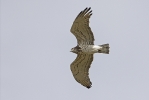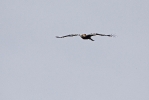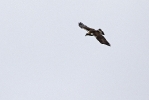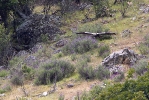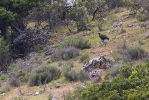In spite of the drought dense populations of field voles emerged by November in unploughed fields, grassy field margins and fallow-lands on the Heves Plain. This is well shown by the relative high density of wintering Buzzards and Harriers.
The plumage variety in the Common Buzzard is infinite, individuals with very different plumage colours and patterns can be seen this time of the year.
I could take photos of a young Rough-legged Buzzard (RLB) earlier this week. It had a very similar appearance to the young pale Common Buzzard (CB) I had photographed recently.
I put together their images in order to show you the differences between their plumages.
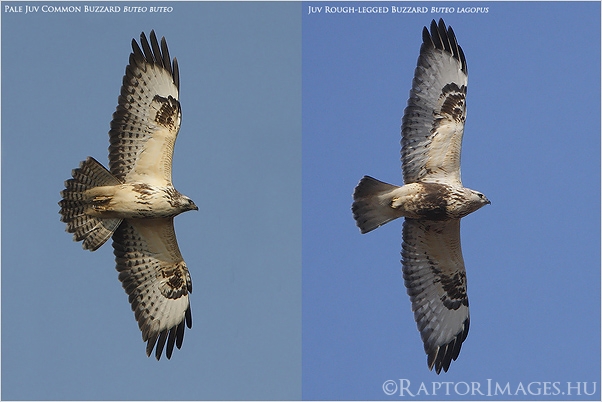
The colour and pattern of the underwings of the birds are confusingly similar.
However, due to the wide dark tips of the remiges and the more intensive barring of the secondaries the underwing of the Common Buzzard looks somewhat darker. Similarly, the tail also looks darker in the Common Buzzard. There are marking differences in the pattern of the head, breast and especially of the belly forming a dark brown patch in the young RLB.
Although, the angle of the wings of the birds differs a bit resulting in a narrower wing look in the RLB, the much longer wings of the RLB can clearly be seen.
Let’s talk about a recent threat connecting to this image.
There is a recurring proposal of the Hungarian hunting community on the control of the Common Buzzard and Marsh Harrier populations pleading their negative effects on small game populations.
This proposal is now supported at high political levels and would downgrade these species’ conservation status and permit their legal shooting and killing.
This presents an extremely narrow and poor view on a complex ecological system in which several environmental and anthropogenic factors’ cumulative effect define the population size of the small game populations rather than two highlighted birds of prey species. A real “end of barrel” solution!
It is obvious for everyone who completed secondary technical education that the size and viability of small game populations do not depend exclusively on two raptor species picked up from the predator guild and feeding mainly on rodents anyway, but rather on the general quality of available habitats.
So, efforts should be made on to increase habitat availability and quality for small game species instead of killing more animals.
Putting it all aside, I would take my hat off to those hunters who would be able to ID the Buzzard above without binoculars and define within seconds the one which can be shot.
If the Common Buzzard and Marsh Harrier were permitted to be shot legally many specimens of confusion protected and strictly protected species (Honey, Long-legged, Rough-legged Buzzards, Booted Eagles and Montagu’s, Hen and Pallid Harriers) would be shot in the future too. Simply because most hunters are not able to separate these species.
The control of these raptors is therefore completely unacceptable and entirely against Hungarian and European nature conservation traditions and legislation in force.
Hope this will not happen!
I uploaded some images of Buzzards and Harriers into the New Images gallery.
Cheers,
Andras

